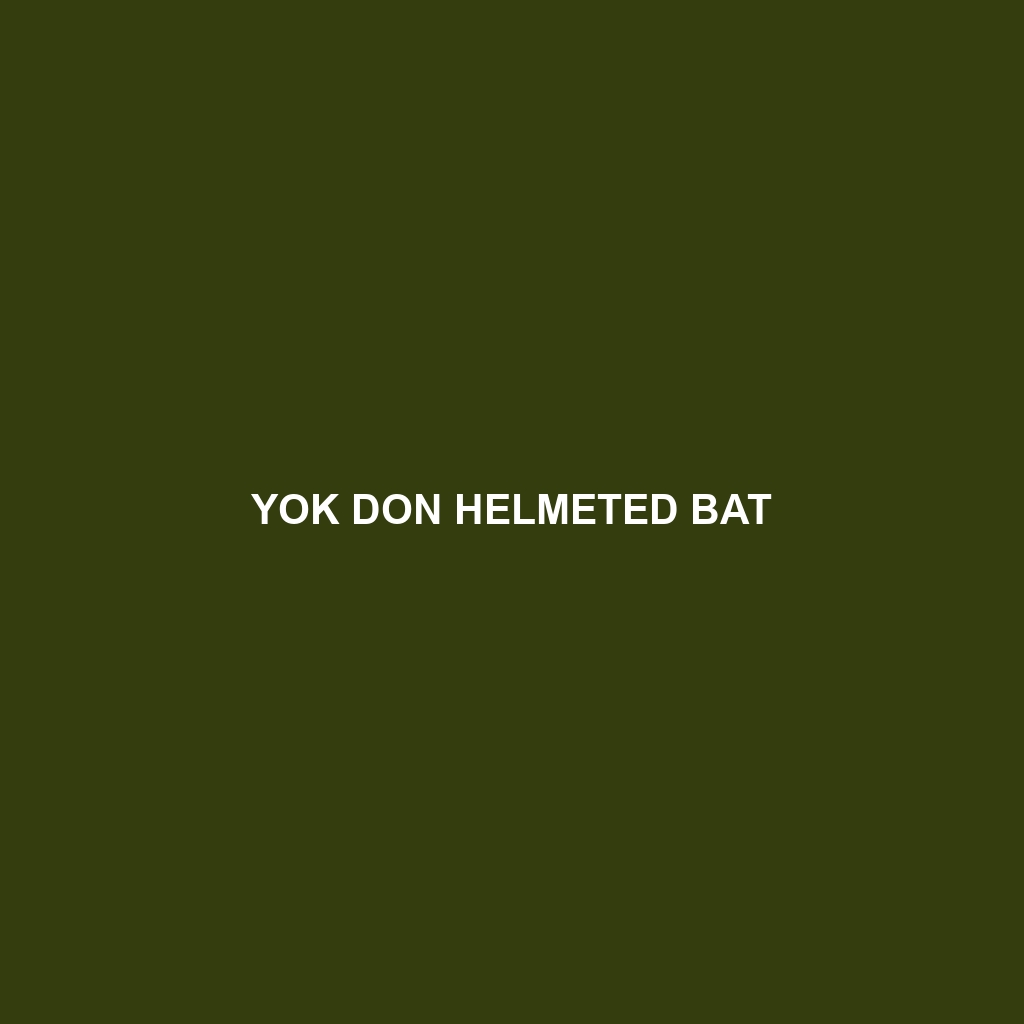Yok Don Helmeted Bat
Common Name: Yok Don Helmeted Bat
Scientific Name:
Habitat
The Yok Don Helmeted Bat is primarily found in the biodiverse regions of Vietnam, particularly within the Yok Don National Park. This species inhabits tropical forests, grasslands, and areas near water bodies. The unique environmental features of these regions, such as dense foliage and abundant insect populations, make them ideal for the survival of the Yok Don Helmeted Bat.
Physical Characteristics
The Yok Don Helmeted Bat is characterized by its medium size, typically ranging from 8 to 12 centimeters in length. Its fur is generally a rich brown or grayish hue, with lighter underparts that provide excellent camouflage in its natural habitat. A distinctive feature of this bat is its unique helmet-like structure on its head, which differentiates it from other bat species. The ears are large and rounded, and the wings are long and narrow, adapted for agile flight.
Behavior
This bat species is primarily nocturnal, emerging at dusk to forage for insects. The Yok Don Helmeted Bat exhibits impressive flight agility, often engaging in rapid maneuvers to capture prey mid-air. Socially, they are known to roost in small groups, which fosters a communal environment for foraging and protection against predators.
Diet
The Yok Don Helmeted Bat predominantly feeds on a variety of insects, including moths, beetles, and flies. It utilizes echolocation to navigate and find food, allowing for precise hunting in the dark. This insectivorous diet plays a critical role in maintaining the ecological balance by controlling insect populations in its habitat.
Reproduction
Reproductive behavior in Yok Don Helmeted Bats typically occurs during the warm months, aligning with the peak of insect availability. Females give birth to a single pup each breeding season, usually around May to July. Offspring are born small and helpless, relying on their mothers for warmth and nourishment until they can fly independently at around four weeks old.
Conservation Status
The Yok Don Helmeted Bat is currently classified as “Vulnerable” according to the International Union for Conservation of Nature (IUCN). Its population is threatened by habitat loss due to deforestation and agricultural expansion, highlighting the importance of conservation efforts to protect this unique bat species.
Interesting Facts
One fascinating aspect of the Yok Don Helmeted Bat is its unique morphological adaptation—the helmet structure on its head, which is believed to play a role in mating displays or species identification. Additionally, this bat has been observed to utilize different foraging strategies based on prey availability, demonstrating advanced behavioral flexibility.
Role in Ecosystem
As a key insectivorous predator, the Yok Don Helmeted Bat plays an essential role in controlling insect populations within its ecosystem. By maintaining these populations, it contributes to the overall health of its habitat, promoting plant growth and supporting other wildlife that relies on a balanced ecosystem. The presence of this bat species indicates a healthy environment, underscoring its ecological significance.
